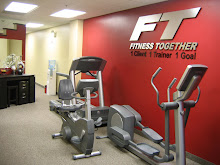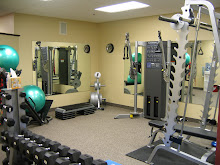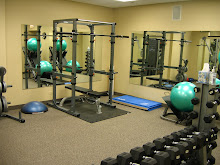The definition of a goal is- what one intends to do or achieve. The hardest part of a fitness program is getting started, and the second is maintaining it. Unfortunately, most people do not have goals when it comes to their health and fitness. You may drive to the gym, but until you walk through the doors you have no clue as to what you are doing that day. This is why millions of people either go through the motions when it comes to their workouts or do not workout at all. Fitness goals should be no different than those you set for your business, your family, or your future.
According to the National Academy of Sports Medicine, research confirms those who are certain about what they want to accomplish are six times more likely to successfully make life changes than those who are less certain. Conversely, those with conflicting goals, or those who are unsure about their goals, are significantly more likely to, experience depression and anxiety, be less happy, have more physical illnesses and doctor visits, and spend less time taking action towards their fitness goals. Does this sound like you? If so, let’s establish your fitness goals. Your goals must be specific, challenging, and measureable.
- Specific goals make us work harder. Studies show that specific goals result in better performance than easier goals or having no goals at all. Examples of fitness goals could be the number of workouts per week, the amount of time engaging in cardiovascular exercise, and so forth. So, get the calendar out and be specific!
- Make your fitness goals challenging. If your goals are challenging, you will accomplish more than modest goals. Step it up when it comes to the intensity of your workouts- train for a 5k or triathlon. Reach beyond your comfort zone and you will accomplish more. Just think how great you will feel after having trained for an event and accomplishing it or telling yourself you are going to strength train twelve days this month and you do it. You will be inspired and have built a new level of confidence for yourself. Make fitness fun!
- Your goals must be measurable. This will allow you to determine whether the strategy is working. People have a tendency to measure their goals based on the ‘all-or-none’ theory, a tendency that leaves people vulnerable to letting a minor setback fall into a major relapse and total collapse. This is why so many people fail at fitness. They put too much pressure on themselves by committing to six or seven days of working out. A goal like this is only setting you up for failure. Between work and family, it is very difficult to fit in six or seven great workouts in a week. A more realistic goal would be to start with three to five days per week and commit to taking this time for you and be able to enjoy a quality workout. Also, do not sign up for a marathon if you have never run before. Take baby-steps and try a local 5k first.
Believe that you can accomplish the goals you have set. If you truly believe you will be successful, you will work harder, achieve more, be happy, set more goals, and view setbacks as a source of motivation.
Accomplishing your fitness goals can be very powerful, if not life changing. The television reality show, Biggest Loser, is a great example. The people selected for that show were determined and committed to losing weight. Even the ones who have been voted off maintained great discipline and motivation to do the work on their own. Goals can be powerful. Set yourself up for success and establish specific, challenging, and measurable fitness goals.
Written by Nick Clark, BS, NASM-CPT, Owner of a Fitness Together in Lakewood Ranch, Florida.
Edited By: Jason Copeland, CSCS










